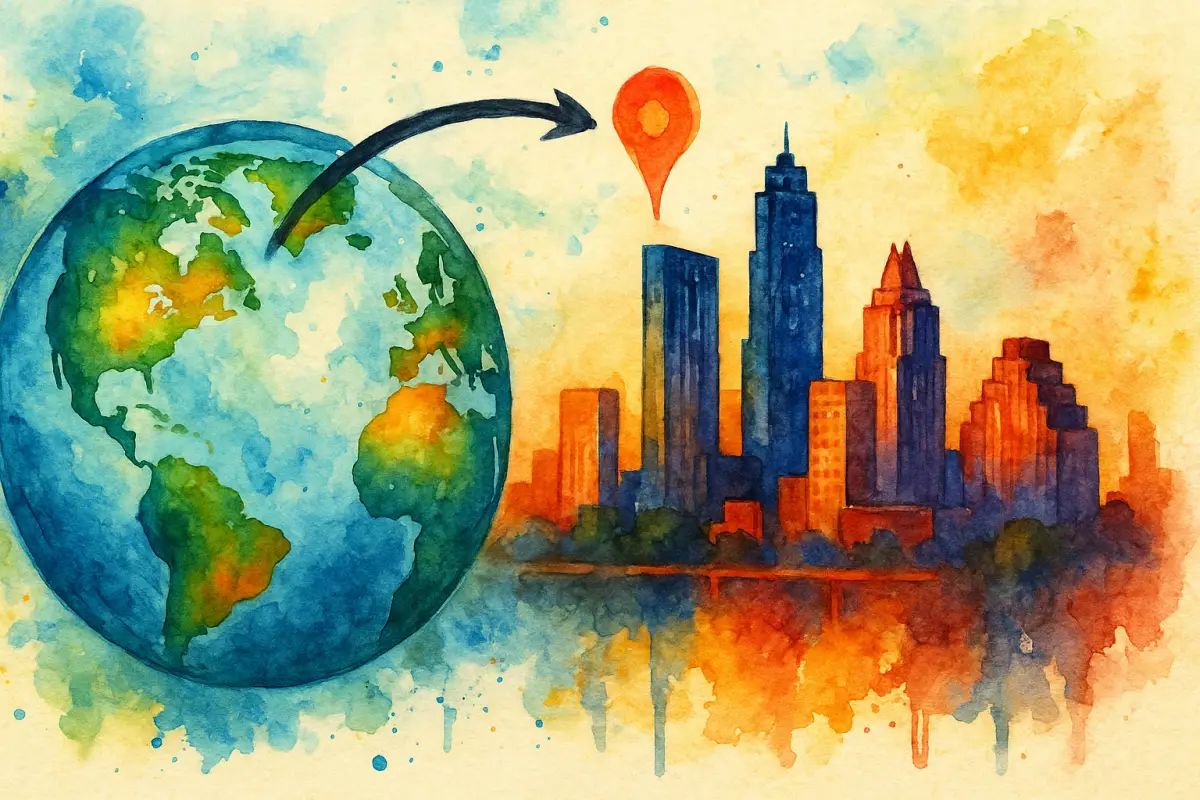Austin once felt like a big small town. The Capitol dome and the University tower framed most of the skyline, and business leaders, professors, artists, and entrepreneurs crossed paths at local restaurants without much thought about global reach. The spirit was real, the grit was real, and the pride that we were a little different showed up everywhere. Now Austin’s place in a global economy is clear, but we cannot live off our past successes in shaping the future.
Today the change is unmistakable. Cities evolve across three decades, that is normal, yet Austin’s story is its own. We did not simply add square footage and traffic. We built an ecosystem that thinks globally and collaborates locally. A college town and state capital matured into an international business hub with its own confident identity.
What makes Austin’s rise feel unique
Multinational companies do more than place a sales team here. They bring research labs, design centers, and innovation groups that sit beside founders and students. Startups launch with global customers in mind from day one. The talent pool is multilingual, multicultural, and mobile, which matters when clients, partners, and investors live in multiple time zones.
Flights, festivals, and forums now serve as bridges. Ideas from Austin reach the world, and ideas from the world reach Austin. It is common to meet a semiconductor expert at breakfast, a health tech founder at lunch, and a space tech investor at happy hour. Each will mention a partner in Dublin, Singapore, Toronto, or Tel Aviv. The cross pollination is real and it shows up in product roadmaps, in partnerships, and in the creative energy that surrounds those moments when people meet.
Another observation stands out. Relationships power this growth more than algorithms do. Economic development organizations from several countries have chosen to set up in Austin. They help their companies enter the United States, and they help Austin firms expand abroad. That two way street is a quiet superpower. When a leader in Central Texas needs a trusted introduction in Asia or Europe, there is often a local contact who will make the connection and shorten the learning curve. Human interaction still moves the needle.
Collaboration is the habit
None of this happened by accident. Austin has a habit of saying yes to collaboration. Universities and industry work together. Nonprofits and government share tables and goals. Founders help founders, and mentors invest time with the next generation. The Austin Chamber, Opportunity Austin, ATC, and many other organizations have spent years pulling in the same direction to help the region grow. We debate, we iterate, and we do the work together. The result is a city that feels ambitious and welcoming at the same time. Austin is global, and still unmistakably Austin.
The opportunity in front of us
Being global is not only about announcements and ribbon cuttings. It is about the everyday actions that keep a community connected and future ready. It is about people who introduce one leader to another, who share what they have learned about new markets, who welcome newcomers into circles where ideas and trust are exchanged. That is how ecosystems compound. When the right people show up, momentum follows.
Central Texas sits at the intersection of semiconductors, artificial intelligence, life sciences, defense, and space. Those clusters are already talking to one another. The more we encourage that cross talk, the more competitive we become for the next wave of growth.
Austin’s best days continue to arrive, because community, collaboration, and conversations remain the engine that keeps this boomtown smart, resilient, and open to the world.
*******************
The Austin Technology Council was founded in 1992 to help bring the tech community together. Now, over thirty years later, our goal is the same. We cannot assume our tight knit tech community will continue to lead if we do not have real leaders coming together and supporting the next generation of tech entrepreneurs and creative thinkers.
